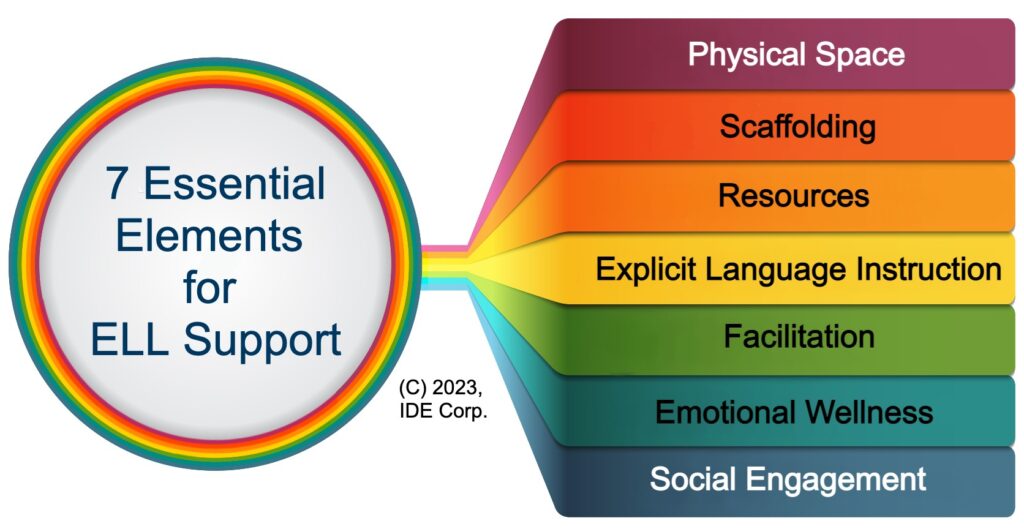Having experienced the pathways and trends in education since the 1950s, I can confidently proclaim . . . this is a time like no other. We are at a crossroads that is both daunting and exhilarating. COVID, AI, and globalization, to name a few, are changing the landscape of students, parents, and teachers. Schools must get ahead of the curve to thrive. So today, I’ll muse on three areas that need attention:
Teachers — Consider all those personality and preference tests you may have encountered over the years that assign letters to describe you. For those who are concrete sequential, those who prefer order and predictability, those who prefer to see an example and follow it . . . teaching is — scratch that — was the perfect profession. COVID changed all that! Nothing was predictable; there was no example to follow; one had to be good at constant pivoting and putting creativity to work to design new ways of reaching students. The hard truth is, teaching will never return to its former, predictable state. Those teachers who thrived in that original environment are fleeing. So now we have a teacher shortage. What should “ahead-of-the-curve” schools do?
1 — Change the job! Make it less about following pacing guides and checking off boxes; make it about being creative and developing a personal plan to achieve the end goal for students. Leaders who want to develop the plan and have dutiful teachers just do what they tell them, and those who think they have all the answers, will lead their schools into obsolescence. Instead, empower teachers. Attract a new kind of teacher to the profession: one who is good with change; one who rises to the challenge of unpredictability; one who likes to apply creativity while keeping an eye on the end goal. And make sure the work environment promotes that!
2 — Engage teachers in a culture of professional learning in which they are involved in continual conversations about student achievement and success. Provide flexible professional learning opportunities. Provide resources they can use to piece together new ways of thinking about teaching and learning. Empower them toward their own professional growth and answers for teaching students today!

AI — Artificial intelligence will change things. I have a master’s degree in computer science from 1988 (that’s a long story). Back then, I was developing AI programs, working in Lisp — the first AI language (okay, enough of geek time); it’s fun to see how far AI has come. It is going to quickly change the way people work . . . and learn. While some schools are blocking ChatGPT (good luck with that), others are embracing it. What should “ahead-of-the-curve” schools do?

1 — Teach teachers to use AI to develop curriculum, lesson plans, IEPs, PBL tasks, rubrics, and more. ChatGPT won’t just spit out the answers. The key to using AI is prompt generation — how you ask it for information — and continued follow-up prompts. I asked it to write a rubric and it created one with the best work on the left; it included negative criteria (e.g., lacks, doesn’t have, etc.). I then wrote that I preferred to show a progression from left to right and include only positive criteria to show students what they can do to get better and better. Its response was . . . that’s a great way to write a rubric . . . and it changed it!
2 — Teach students to use AI in their learning. Instead of the assignment being to write an essay on a topic, make it to write an essay using ChatGPT as your assistant. Hand in all of the prompts you used to arrive at your final essay. Now, grade the student on how effective a conversation they had with ChatGPT, the essay itself, and their reflection on what surprised them about what they learned. Just spitting back the causes of World War II is no longer a valid school assignment. Another option is to have students ask ChatGPT the essay question and capture the results in a document, then start a new conversation and ask again in a slightly different way to get a different response, and then analyze the two responses.
3 — Be sure to include AI prompt generation, research, and deep learning in your career exploration and CTE curriculum. Top-paying jobs are out there now in the field of AI, and that will only grow.
ELLs — “By 2025, 1 out of 4 children in classrooms across the nation will be an English language learner (ELL) student” (NEA). The need for language-accessible learning environments is now! Schools must design classrooms in which all students can learn at high levels, which means that teachers are not delivering whole-group instruction from the front of the room. We need classrooms that embrace personalized instruction and those in which the teacher is working as a facilitator throughout the room (e.g., LATIC). What should “ahead-of-the-curve” schools do?
1 — Watch your curricular textbook/program choices. Ditch any that include directions for teachers to offer whole-group lessons. Nope, nope, nope. Don’t tell me it’s good for everyone to hear it once from the teacher. Those who are not cognitively ready for the content or can’t understand the teacher’s language will only gain a broken spirit from that lesson. Imagine trying to teach with that in play! Instead, opt for giving students a variety of ways to engage in the content prior to a whole-group discussion in which the teacher can solidify learning. (Blog post: https://www.idecorp.com/teachers-superpowers-in-synchronous-instruction)
2 — Provide teachers with professional learning experiences in strategies to support English Language Learners in all classroom and school situations. Consider the strategy of using hand gestures and/or props when offering verbal information. Let’s say you’re teaching and mention the word triangle. Use your hands to draw a triangle in the air. That’s not hard to do, but it will help students understand the word. It’s not something teachers think about on a regular basis . . . we need to rethink how we present information to students.

These are just three areas in which schools need to get ahead of the curve if they are going to survive in today’s world. Don’t get caught behind!
IDE Corp. and its sister company EdQuiddity Inc provide professional learning, curriculum design, and leadership services and products. Let us help you:
- – Provide professional learning resources in strategies for addressing ELLs
- – Provide professional learning in harnessing the power of AI in the classroom
- – Develop an AI curriculum
- – Develop a teacher recruitment process
Contact solutions@idecorp.com
